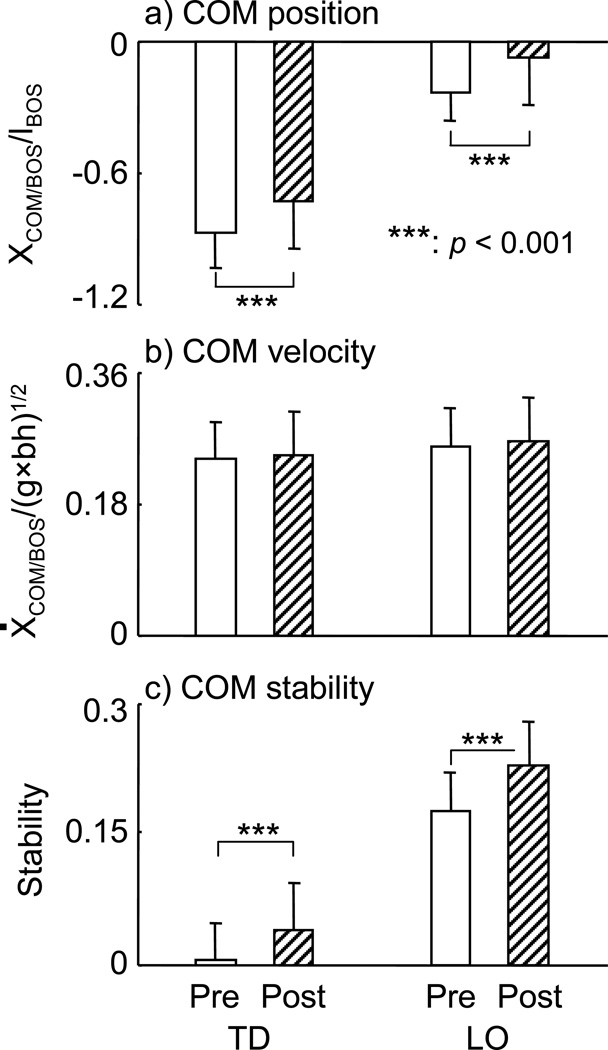Fig. 4.
Comparisons of a) the center of mass (COM) position, b) COM velocity, and c) COM stability between pre- and post-training gait for 73 older adults. Both the COM position and velocity were relative to the rear edge of the base of support (BOS) and respectively normalized by foot length (lBOS) and , where g represents the gravitational acceleration and bh the body height. Stability was calculated as the shortest distance from the given COM motion state (i.e. its position and velocity) and the computer-predicted boundary against backward balance loss under slip conditions.

